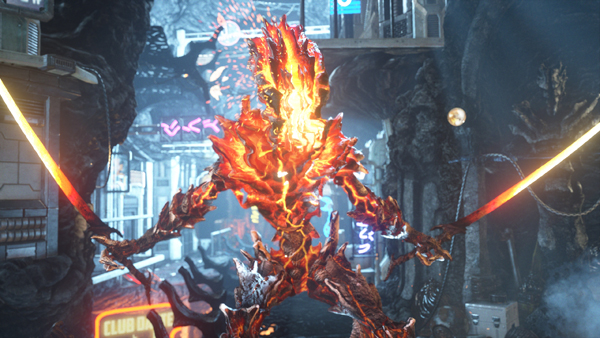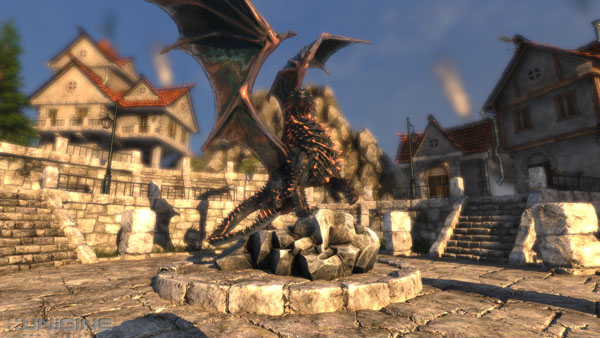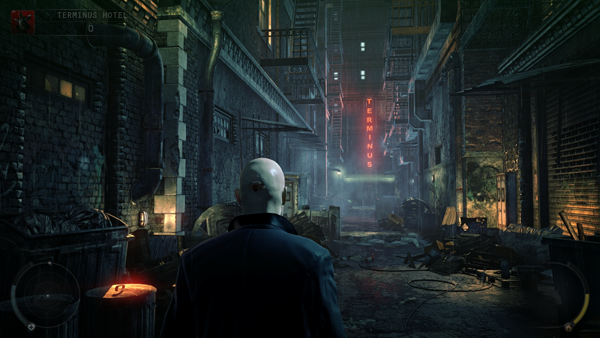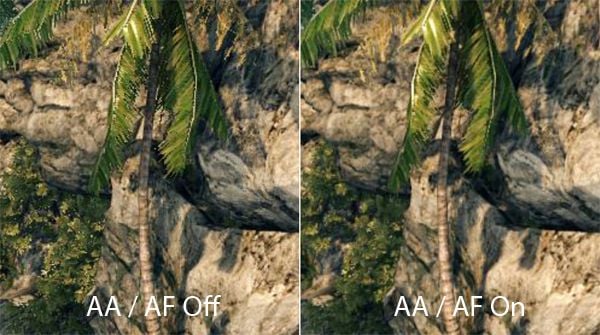
The Bottom Line
Introduction and Package
Introduction of the ASUS GTX 980 4GB STRIX OC

Recently, I had the chance to take a look at the ASUS GTX 970 4GB STRIX OC, and with no surprise, I found myself quite impressed with what ASUS was offering. While we have seen the R9 290X 4GB drop in price and line up with the GTX 970 4GB, the simple fact is that people just aren't interested in buying a card that is a year old, and because of that, you're more than likely going to choose the new GTX 970 4GB over the older AMD option.
If neither of those models provides quite enough power, then the good news is that NVIDIA has you covered. Since its launch, the GTX 980 4GB has done nothing but impress us over and over again, no matter which way we run it. While installing three or four might not hold the best value, you can't deny that it's a setup that you're going to drool over at some point. If you found yourself impressed with what ASUS offered recently with the GTX 970 4GB, but you wanted a bit more power, then the GTX 980 4GB version of the STRIX OC might be exactly what you're after.
The STRIX series from ASUS has really taken silent gaming to another level thanks to its cooler design. Refraining from spinning at idle isn't anything new, and it's something a number of companies now offer. However, the big draw to the STRIX series is that when the card is in use, but not using its full power, the fans will continue to refrain from spinning. This was apparent during a demo at Computex where a machine was playing StarCraft II without the fans of the STRIX card spinning.
Package - What comes inside the box


Looking at the box, you can see it's pretty much identical to the GTX 970 4GB version of the ASUS STRIX we recently looked at. We've got this robotic like owl on the front, along with the model notation, and some of the main features. The features listed here include the fact the card is an OC Edition, it carries 4GB GDDR5 memory, and it offers 0dB gaming. One of the most important features offered is the DirectCU II cooler, which offers up to 30% cooler temperatures, and as we mentioned, silent gaming.
With the box turned over, you can see that ASUS goes into more detail on some of the major features. Starting from the left, you can see a picture of the card, and the connectivity options. Next, you get a rundown on the DirectCU II cooler with its 0dB fan. You can also see benefits of the DIGI+ VRM+ Super Alloy Power feature, which brings less noise, and longer durability. This section finishes with a brief bit of information on the GPU Tweak software that is available, which also offers online streaming.

Moving into the package, you can see we don't have too much going on. Sitting alongside the standard manual and Driver CD, you can see we've got a dual six-pin to single eight-pin PCIe power connector. We've also got four stickers, two of which can be installed on the cooler to give you a certain color scheme. Of course, you also have the option to forgo both stickers, and leave the cooler plain black.
PRICING: You can find the ASUS GTX 980 4GB STRIX OC for sale below. The prices listed are valid at the time of writing, but can change at any time. Click the link to see the very latest pricing for the best deal.
United States: The ASUS GTX 980 4GB STRIX OC retails for $579.99 at Amazon.
Video Card Details and Specifications
Close up with the ASUS GTX 980 4GB STRIX OC

After pulling the card out of the box, you could really just about mistake it for the GTX 970 4GB version we recently looked at. However, if you look more closely, you will notice that while the cooler is the same size and design, the PCB on the GTX 980 4GB STRIX is actually a little longer, making the card look slightly larger overall.
Most of the card is taken up by the large DirectCU II cooler that nearly covers the entire PCB. Here you can see a number of heat pipes coming out of the bottom of the card, and the heat pipes coming out of the top of the card. Of course, these are designed to draw the heat away from the GPU area. We've got the same dual fan design, and behind the fans we've got that massive aluminum heat sink, which did a fantastic job of cooling the lower-end GTX 970 version of the card.


While the GTX 970 version of the card was able to shrink the power connectivity down to just a single eight-pin PCIe power connector, the larger GTX 980 version on the other hand moves from the stock dual six-pin PCIe power connector setup to a single six-pin PCIe power connector sitting alongside a single eight-pin PCIe power connector.
Staying across the top of the card, but moving closer to the front, you can see our two SLI connectors that give us the ability to run up to four cards in Quad SLI. Looking above, you can see these are slightly raised due to the cooler that shoots over the top of the card. Thanks to the flexible SLI bridge, we don't really need the raised connectors when using just two cards. However, when we move to three or four card setups where a solid bridge is used, it wouldn't be possible to use the three or four bridge connectors without the height increase.

It's nice to see that unlike the GTX 970 version of the STRIX card, ASUS has opted to leave the default I/O setup here. That means, alongside the Dual-Link DVI connector and HDMI port, we've got three full-size DisplayPort connectors to round things off. You can see there are some vents here to let some of the hot air out of the back of your case. You can also see just how far the PCB and cooler shoot past the top of the I/O panel.
Specifications
As the name would suggest, we're dealing with a card that has already been overclocked, just like the GTX 970 version of the card we recently looked at. Out of the box, a reference GTX 980 4GB comes with a core clock of 1127MHz, which is then boosted to 1216MHz. As for the 4GB of GDDR5, that comes in at 7012MHz QDR.

Looking above, you can see the memory clock hasn't changed, and it remains at 7012MHz QDR. As for the core clock, that has been increased up to 1178MHz. This also means that the boost clock has been increased, and now comes in at a solid 1279MHz.
Test System Setup & FPS Numbers Explained
Test System Setup

We would like to thank the following companies for supplying and supporting us with our test system hardware and equipment: Intel, ASUS, and Corsair.
As you can see, we're working with our new testbed setup, which sees us move to the X99 platform, along with a few other minor changes. Before we begin discussing the performance, let's just quickly cover the cards that you'll see in our graphs today.
Moving to a new testbed means that we've had to fully scrap our previous results, and start from scratch again; for that reason, you're going to see us slowly build up the cards in our graphs over the coming weeks and months. For now, sitting alongside the ASUS GTX 980 4GB STRIX OC, we've got the lower-end GTX 970 4GB version of the card we recently looked at, and the reference clocked HIS R9 290X 4GB.
The FPS Numbers Explained
When we benchmark our video cards and look at the graphs, we aim to get to a certain level of FPS which we consider playable. While many may argue that the human eye can't see over 24 FPS or 30 FPS, any true gamer will tell you that as we climb higher in Frames per Second (FPS), the overall gameplay feels smoother. There are three numbers we're looking out for when it comes to our benchmarks:
30 FPS - It's the minimum number we aim for when it comes to games. If you're not dropping below 30 FPS during games, you're going to have a nice and smooth gaming experience. The ideal situation is that even in a heavy fire fight, the minimum stays above 30 FPS, making sure that you can continue to aim easily, or turn the corner with no dramas.
60 FPS - It's the average we look for when we don't have a minimum coming at us. If we're getting an average of 60 FPS, we should have a minimum of 30 FPS or better, and as mentioned above, it means we've got some smooth game play happening.
120 FPS - This is the newest number that we've been hunting down over recent months. If you're the owner of a 120 Hz monitor, to get the most out of it, you want to get around the 120 FPS mark. Moving from 60 FPS / 60 Hz to 120 FPS / 120 Hz brings with it a certain fluidity that can't really be explained, but instead has to be experienced. Of course, if you're buying a 120 Hz monitor to take advantage of 3D, an average of 120 FPS in our benchmark means that in 3D you will have an average of 60 FPS, which again means you should expect some smooth gameplay.
Why are some graphs incomplete?
Adding new game benchmarks is a long, tedious, and time consuming task, as every video card has to be re-tested in those new benchmarks. For that reason, we have always just reevaluated our benchmark line up every six months. To stay up-to-date and current with the latest benchmarks and games available, we've changed our approach to adding new benchmarks.
Our benchmark line up will progress and be updated as newer, more intensive games with benchmarks comes to light. While this will mean that initially you may only see a single video card in those particular graphs, as the weeks go on and we test more and more video cards, the results will quickly grow. This will help keep our benchmark line up as up-to-date as possible as we introduce and remove games on a constant basis.
Benchmarks - 3DMark
3DMark Fire Strike
Version and / or Patch Used: 1


Starting off with 3DMark Fire Strike, you can see that the GTX 980 offers a nice boost over the GTX 970 and the R9 290X at both resolutions.
3DMark Sky Diver
Version and / or Patch Used: 1.1


Moving into Sky Diver, you can see the GTX 980 4GB gets a bit of a boost, but nothing major. Since this benchmarks tends to be more focused on mid-range offerings, we don't see a whole lot of separation when it comes to the higher-end cards.
Benchmarks - Catzilla & Unigine Heaven
Catzilla
Version and / or Patch Used: 1.3


Catzilla saw the GTX 970 get a nice little boost against the R9 290X 4GB at both resolutions. Looking above, you can see that the separation is even further increased, and the ASUS GTX 980 4GB STRIX OC sees solid performance at both resolutions thanks to the extra power from the GTX 980.
Unigine Heaven Benchmark
Version and / or Patch Used: 3


Looking at Heaven, you can see that the GTX 970 and R9 290X performed very close to each other. However, with the extra power offered from the GTX 980, you can see that the ASUS GTX 980 4GB STRIX OC features some great performance at both resolutions.
Benchmarks - Unigine Valley & Just Cause 2
Unigine Valley Benchmark
Version and / or Patch Used: 3


Like we saw under Heaven, the R9 290X and GTX 970 performed similarly. Although, once you move onto the higher-end GTX 980, you can see solid performance gains at both resolutions, which really helps separate the ASUS GTX 980 4GB STRIX OC from the other two cards.
Just Cause 2
Version and / or Patch Used: Latest Steam Update


Just Cause 2 performance seems to hit a bit of a wall around the 90 FPS mark. You can see all of our setups sit quite close to each other, and there is not much separating them.
Benchmarks - Metro: Last Light & Sleeping Dogs
Metro: Last Light
Version and / or Patch Used: Latest Steam Update


Looking at Metro: Last Light, you can see that the ASUS GTX 980 4GB STRIX OC displays some strong performance across the board in comparison to the other setups. While we do see some extremely playable numbers at both 1920 x 1200 and 1680 x 1050, when we move to 2560 x 1600, you can see that the 55 FPS average is just a little too low for us.
Sleeping Dogs
Version and / or Patch Used: Latest Steam Update


Looking at Sleeping Dogs performance, in the lower resolutions, we don't see much of an increase from the ASUS GTX 980 4GB STRIX OC in comparison to the GTX 970 version. However, at the highest resolution, we see a more significant increase, which helps give some extremely solid FPS, especially if you're looking at gaming on a 120 or 144Hz monitor.
Benchmarks - Hitman: Absolution & Tomb Raider
Hitman: Absolution
Version and / or Patch Used: Latest Steam Update


Hitman: Absolution doesn't see too much of a change when compared to the lower-end GTX 970 version of the STRIX card. We see a bit more of a boost at the highest resolution, but overall, we see solid FPS out of both NVIDIA cards at all resolutions.
Tomb Raider
Version and / or Patch Used: Latest Steam Update


Moving onto Tomb Raider, you can see that the R9 290X manages to get a leg up on the GTX 970 across the board. Thanks to the extra performance from the GTX 980, though, we manage to surpass the R9 290X without any issues. As for the overall FPS, while we fall a little short of that 60 FPS average we want at 2560 x 1600, thanks to the solid 41 FPS minimum, gameplay should be fairly smooth overall.
Benchmarks - BioShock Infinite & Battlefield 4
BioShock Infinite
Version and / or Patch Used: Latest Steam Update


BioShock Infinite sees some solid performance numbers at all resolutions, and solid gains when compared to the lower-end GTX 970 4GB STRIX OC. As for the overall FPS, you can see the numbers are extremely solid, with the ASUS GTX 980 4GB STRIX OC managing nearly 80 FPS average at the highest resolution.
Battlefield 4
Version and / or Patch Used: Latest Origin Update


Battlefield 4 sees some great performance numbers across the board, alongside some awesome performance gains in comparison to the other two cards. Overall, you can see that Battlefield 4 isn't an issue for any of these setups, with just excellent numbers seen at all resolutions.
Benchmarks - GRID Autosport
GRID Autosport
Version and / or Patch Used: Latest Steam Update


GRID Autosport doesn't see too much change at the lowest resolution, as we hit a bit of a FPS wall. As we climb up the resolution table, you can see the ASUS GTX 980 4GB STRIX OC starts to separate from the other cards here, and push forward with some fantastic FPS across the board.
F1 2014
Version and / or Patch Used: Latest Steam Update


Thanks to the FPS wall these higher-end cards hit, you can see that all three setups perform very close to each other, and show little separation.
Benchmarks - Middle-earth: Shadow of Mordor
Version and / or Patch Used: Latest Steam Update


Shadow of Mordor clearly favors the AMD offering; as you can see, the R9 290X managed to get a solid jump on the ASUS GTX 97.0 4GB STRIX OC. Looking above, you can see that the ASUS GTX 980 4GB STRIX OC manages to close that gap, so only a single FPS separates the two setups. Of course, it's important to remember that the GTX 980 4GB does carry a price increase.
Benchmarks - High Quality AA and AF
High Quality AA and AF Testing

While we test all our games with maximum in-game settings, turning on Anti-Aliasing (AA) and Antistrophic Filtering (AF) helps take the intensity of our testing to another level.
Here we see video cards go from playable FPS to unplayable FPS, and the real power houses continue to help break that 60 FPS mark we always aim for to provide a smooth gaming experience.

Turning on AA and AF sees the ASUS GTX 980 4GB STRIX OC separate itself by a decent chunk when compared to the other setups here. However, overall, you can see the FPS aren't anywhere near where they need to be for the game to be playable.

With AA and AF enabled, GRID Autosport sees the ASUS GTX 980 4GB STRIX OC get some extremely solid FPS. Looking above, you can see at 1920 x 1200 we've got enough power to hit an average that jumps into the 100s, while at the higher 2560 x 1600 resolution, we see an average that jumps into the 80s.

Sleeping Dogs numbers look good with AA and AF enabled, and once again we see a solid increase in performance from the ASUS GTX 980 4GB STRIX OC in comparison to our other two cards. While it's not quite enough to get playable numbers at 2560 x 1600, you can see at 1920 x 1200 we've got enough power to take our average out of the 60 FPS range into the 70 FPS range.
Benchmarks - 4K - 3840 x 2160 Testing
4K - 3840 x 2160 Testing

4K monitors are the next step for gamers demanding the best in image quality. With 4x the pixels of a standard 1920 x 1080 monitor (meaning 4x the intensity), 3840 x 2160 brings a new level of intensity to video cards.
To make sure that you're buying the right video card for a monitor that offers such a large resolution, we test the latest and greatest video cards in a couple of benchmarks to give you an idea of just what kind of setup you require.

Beginning with our 4K performance numbers in 3DMark Fire Strike Ultra, you can see the ASUS GTX 980 4GB STRIX OC does a good job of separating from the other two cards here.

Heaven paints the same kind of picture with the ASUS GTX 980 4GB STRIX OC having no issue separating itself from the other two setups, and showing strong gains over the GTX 970 version of the STRIX card.

Moving away from synthetic benchmarks, and into a game, you can see that the R9 290X manages to come out ahead of our other two setups. This isn't a huge surprise, as we've seen the AMD offerings perform better at 4K. What's really important to take away from this, though, is the fact that while the R9 290X does manage to come out ahead, the FPS are just way too low overall to be playable.
Benchmarks - 4K - 3840 x 2160 Testing Continued

Hitman: Absolution sees the R9 290X and ASUS GTX 980 4GB STRIX OC perform quite close to each other. Although, overall, you can see all of our setups are short of the FPS we need.

Tomb Raider sees the R9 290X and ASUS GTX 980 4GB STRIX OC perform very close to each other again. However, more importantly, you can that the FPS are just way too far away to be considered playable.

On the other hand, GRID Autosport not only favors the ASUS GTX 980 4GB STRIX OC here, but also sees very solid and playable FPS at this massive resolution.
Temperature & Sound Testing
Temperature Test

The temperature of the core is pulled from MSI Afterburner with the max reading used after a completed run of 3DMark Vantage at the Performance preset.

Sound Test

Pulling out the TES 1350A Sound Level Meter, we quickly find ourselves yelling into the top of it to see how loud we can be.
After five minutes of that, we get a bit more serious, and place the device two CM away from the fan on the card to find the maximum noise level of the card when idle (2D mode), and in load (3D mode).

Noise levels on the higher-end version of the STRIX card continues to be excellent. At idle, we don't have any noise thanks to the fan not spinning. Under load, you can see we're able to come in at a lower noise level than our R9 290X, even with the stronger performance.
Power Consumption Testing

Using our PROVA Power Analyzer WM-01 -or "Power Thingy" as it has quickly become known as to our readers- we are now able to find out what kind of power is being used by our test system and the associated video cards installed. Keep in mind that it tests the complete system (minus LCD monitor, which is plugged directly into AC wall socket).
There are a few important notes to remember, though. While our maximum power is taken in 3DMark06 at the same exact point, we have seen the power being drawn as much as 10 percent more in particular tests. We test at the exact same stage every time, so tests should be very consistent and accurate.
The other thing to remember is that our test system is bare minimum -only a SSD is used, with a single CD ROM, and minimal cooling fans.
So, while the system might draw 400 watts in our test system, placing it into your own PC with a number of other items will result in a higher draw.

Finishing up our testing, you can see power numbers are pretty solid with the idle number sitting just a little higher than the R9 290X. As for the load number, you can see that manages to sneak in a little lower. For a setup like this, we'd recommend a quality power supply of around 650 watts.
Pricing, Availability, and Final Thoughts
At around $150 to $200 more than the R9 290X 4GB, the GTX 980 4GB now has a decent price jump on the AMD counterpart. Direct competition to the GTX 980 4GB is quite limited these days thanks to the price drop that happened on the R9 290X 4GB. With that said, Sapphire has just launched an 8GB version of the R9 290X, which is designed to compete against the more expensive NVIDIA offering. The new Sapphire card will be the card I test following this review.
With no real direct competitor to the GTX 980 4GB right now, the main question we need to answer is: Should you spend the extra $150 to $200 associated with the GTX 980 over the R9 290X or GTX 970? The answer is simple: Yes, if you can afford it. The simple fact is, if you're after the fastest single GPU solution at the moment, then you can't look past the new Maxwell based GTX 980.
The only times that you see the R9 290X 4GB come into play is when we move to the 4K resolution. While this is good news for the R9 290X 4GB, which comes in at a more aggressive price point, when this resolution does have a lead, the FPS are so far below where we need them to be that it's irrelevant. So, the only time it could really come into play is if you're opting for a dual card setup.
Now let's get into specifics. As far as the GTX 980 goes, this is an awesome option. We've had a chance to look at a couple, and they've all been very good. The DirectCU II cooler with its 0dB technology is something that's going to be appreciated by users wanting a quieter system. While the fans refraining from spinning at idle isn't anything new. What makes the STRIX card stand out is the fact that the fans also continue to not spin under low load environments. This means that if you're playing something a bit older, or just not all that intensive, the card continues to be silent. Combined with the right cooler and case, you could be gaming with solid FPS while your PC is nearly silent.
We've looked at a couple of great GTX 980 4GB cards already, and this is another one on hand. If you're looking for some strong performance, a fantastic cooler, and a design that can offer nearly silent gaming in certain situations. The ASUS GTX 980 4GB STRIX OC could very well be the right choice for you.
PRICING: You can find the ASUS GTX 980 4GB STRIX OC for sale below. The prices listed are valid at the time of writing, but can change at any time. Click the link to see the very latest pricing for the best deal.
United States: The ASUS GTX 980 4GB STRIX OC retails for $579.99 at Amazon.

| Performance | 95% |
| Quality including Design and Build | 95% |
| General Features | 95% |
| Bundle and Packaging | 90% |
| Value for Money | 93% |
| Overall | 94% |
The Bottom Line: NVIDIA's GeForce GTX 980 GPU continues to impress us and the ASUS STRIX version we've got on hand helps continue that trend. Combining the impressive STRIX series, with the impressive GTX 980 core, makes for just an excellent video card that stands out for all the right reasons.
PRICING: You can find products similar to this one for sale below.
 United
States: Find other tech and computer products like this
over at Amazon.com
United
States: Find other tech and computer products like this
over at Amazon.com
 United
Kingdom: Find other tech and computer products like this
over at Amazon.co.uk
United
Kingdom: Find other tech and computer products like this
over at Amazon.co.uk
 Australia:
Find other tech and computer products like this over at Amazon.com.au
Australia:
Find other tech and computer products like this over at Amazon.com.au
 Canada:
Find other tech and computer products like this over at Amazon.ca
Canada:
Find other tech and computer products like this over at Amazon.ca
 Deutschland:
Finde andere Technik- und Computerprodukte wie dieses auf Amazon.de
Deutschland:
Finde andere Technik- und Computerprodukte wie dieses auf Amazon.de
Similar Content
Related Tags
